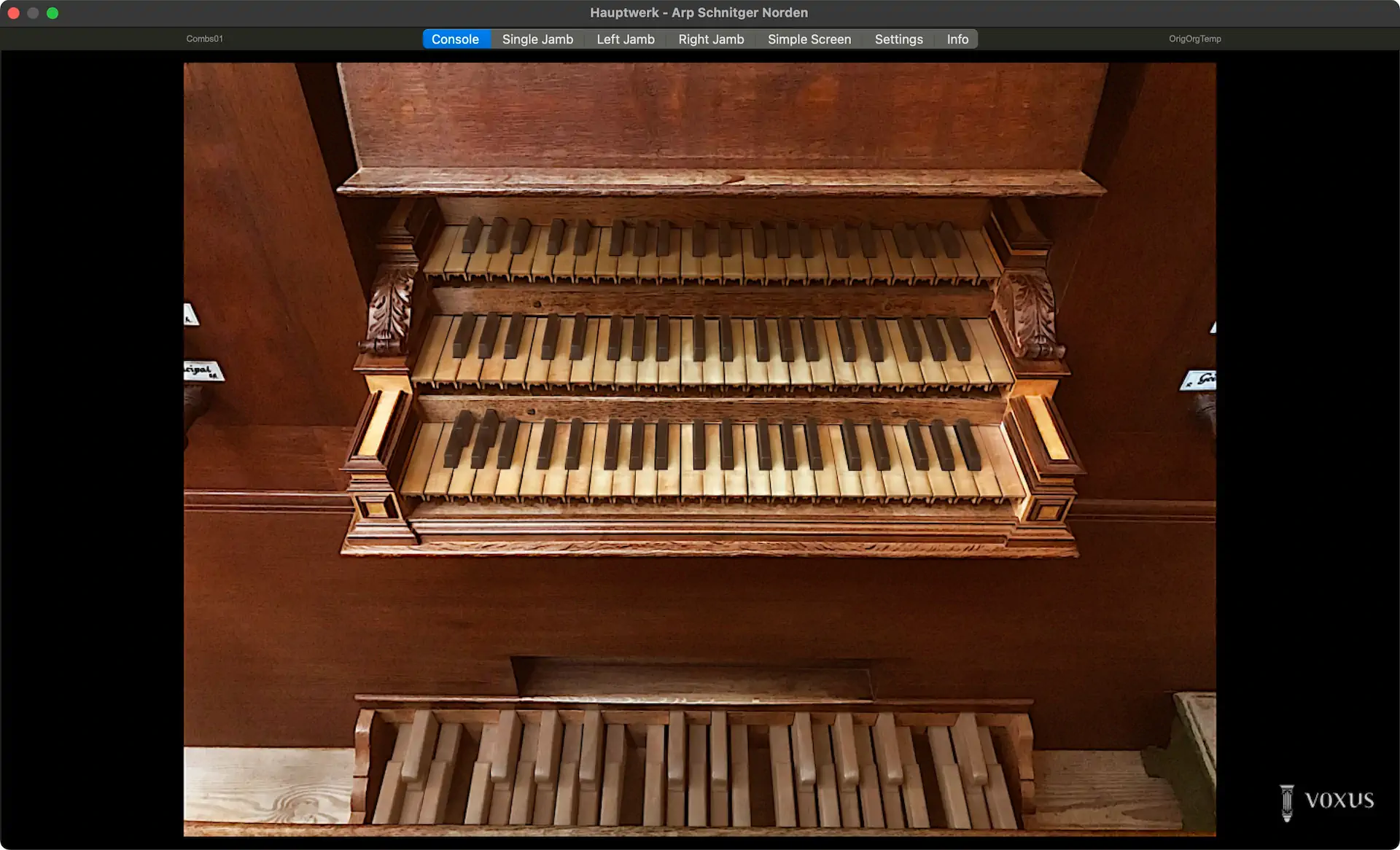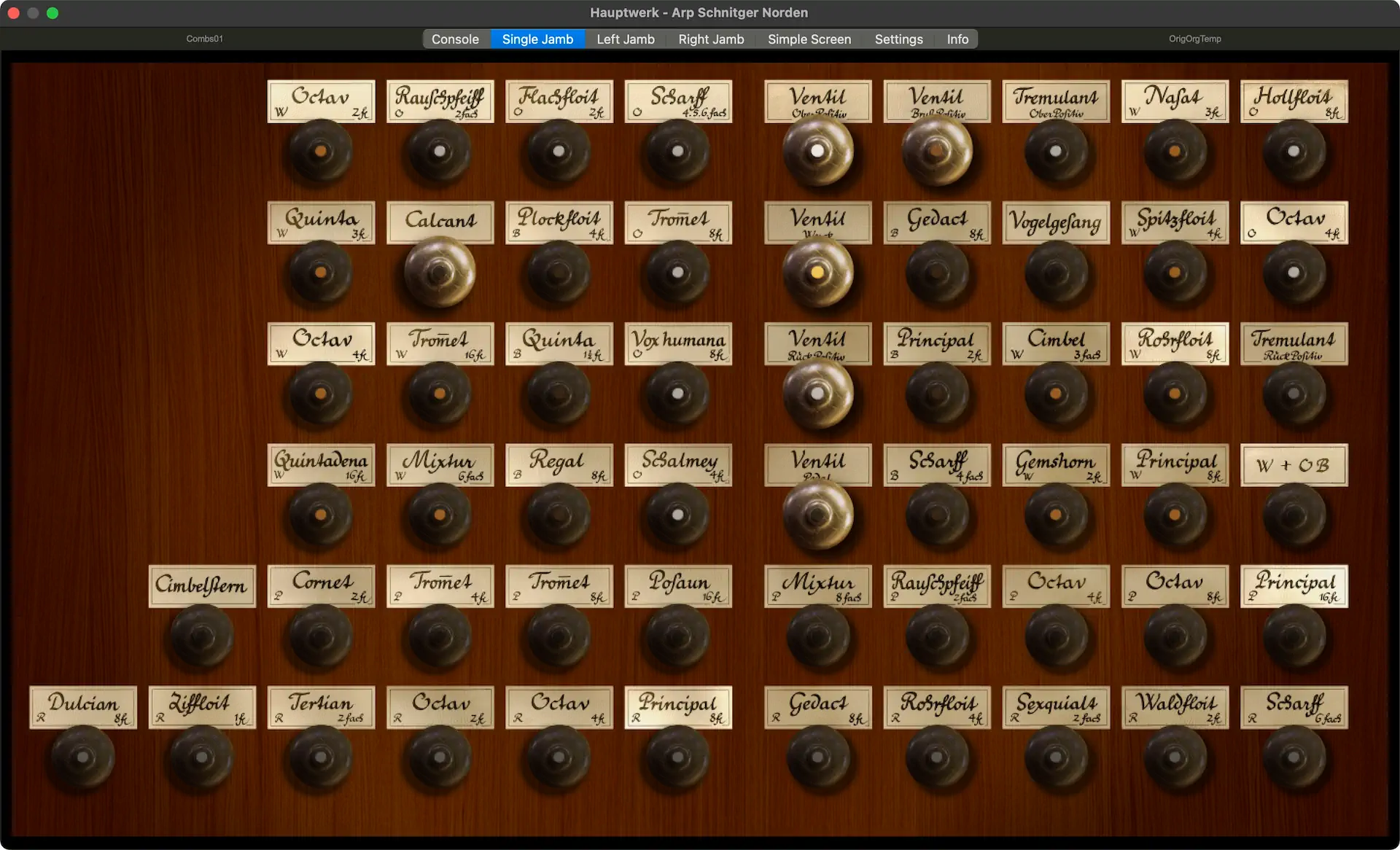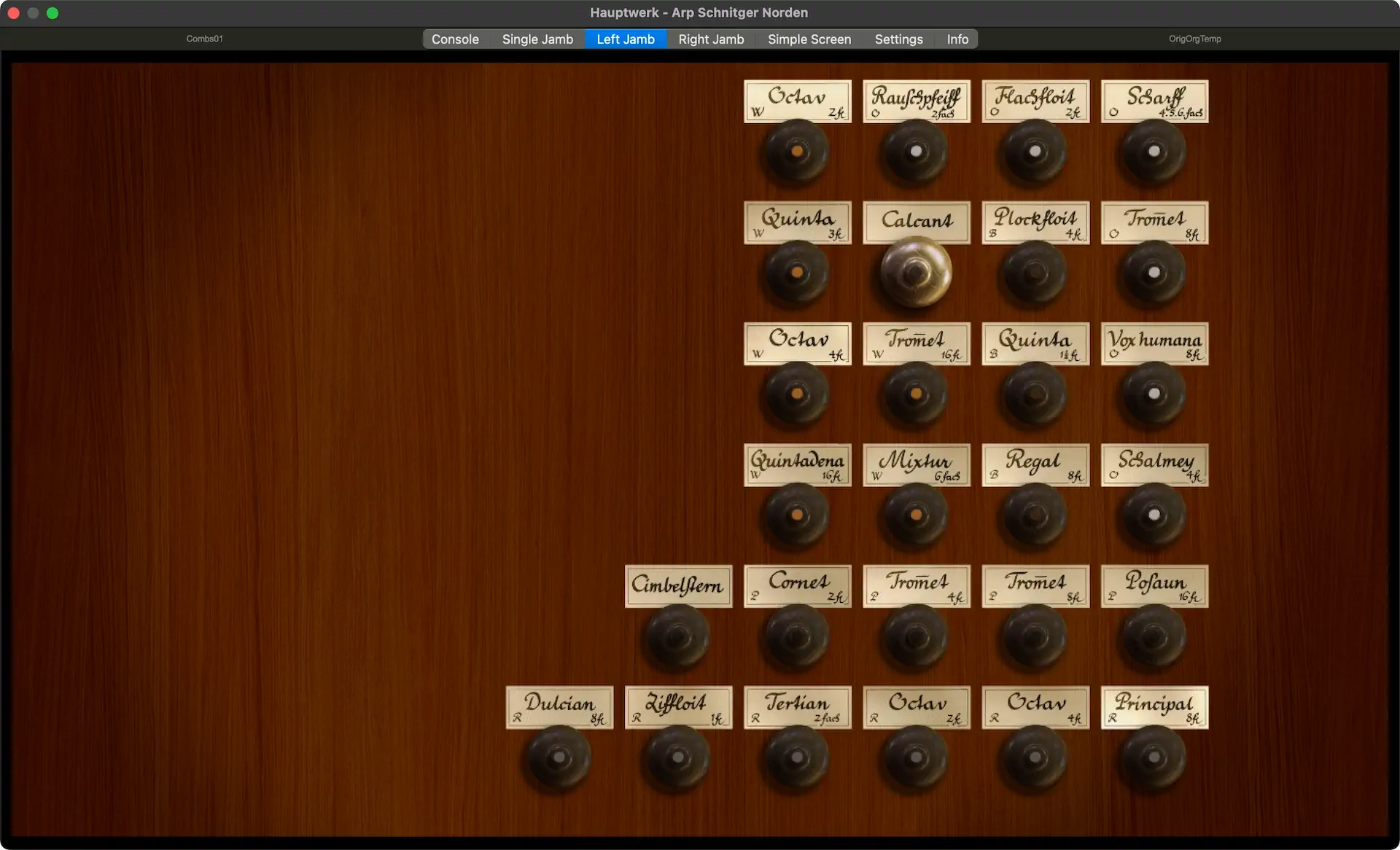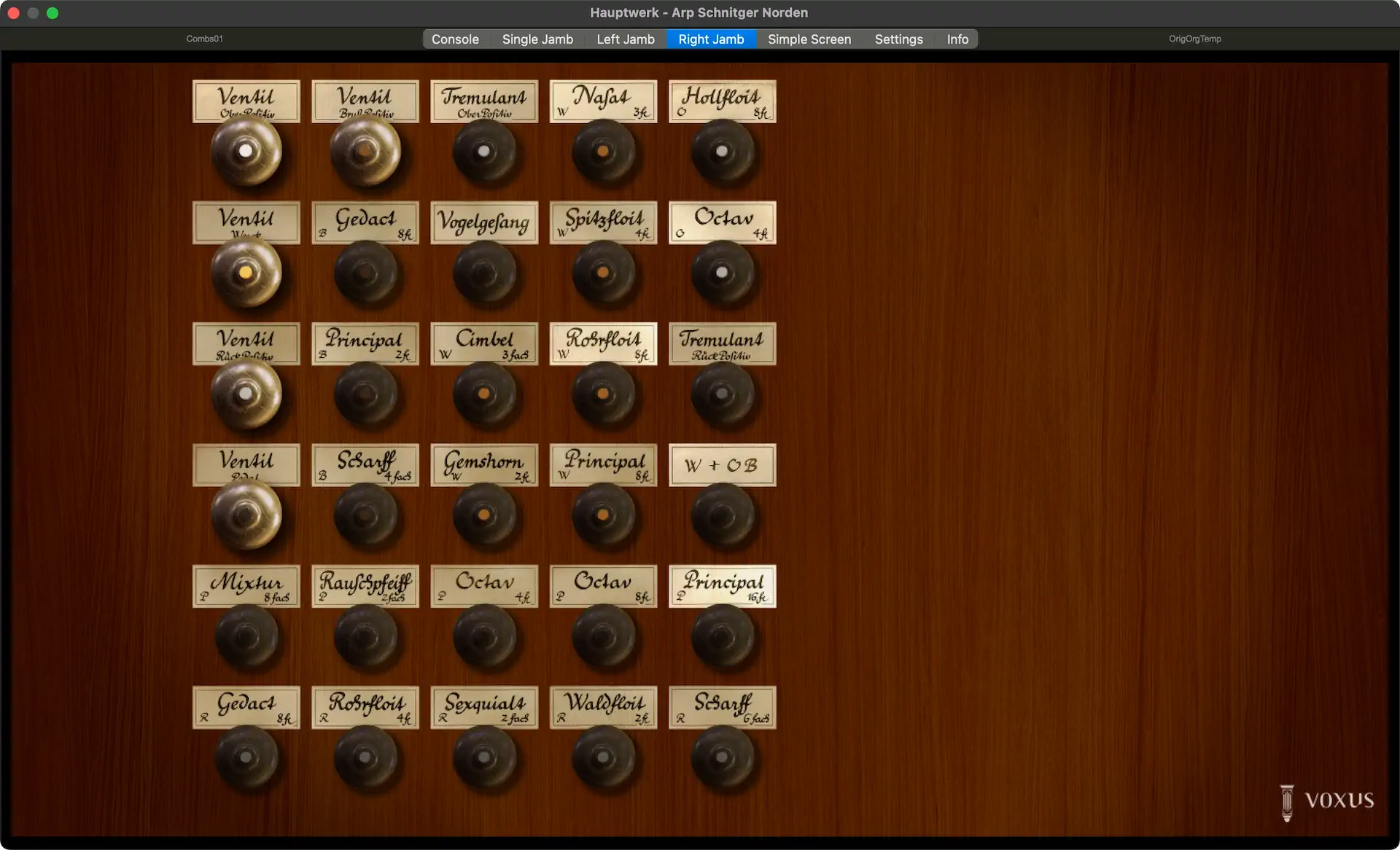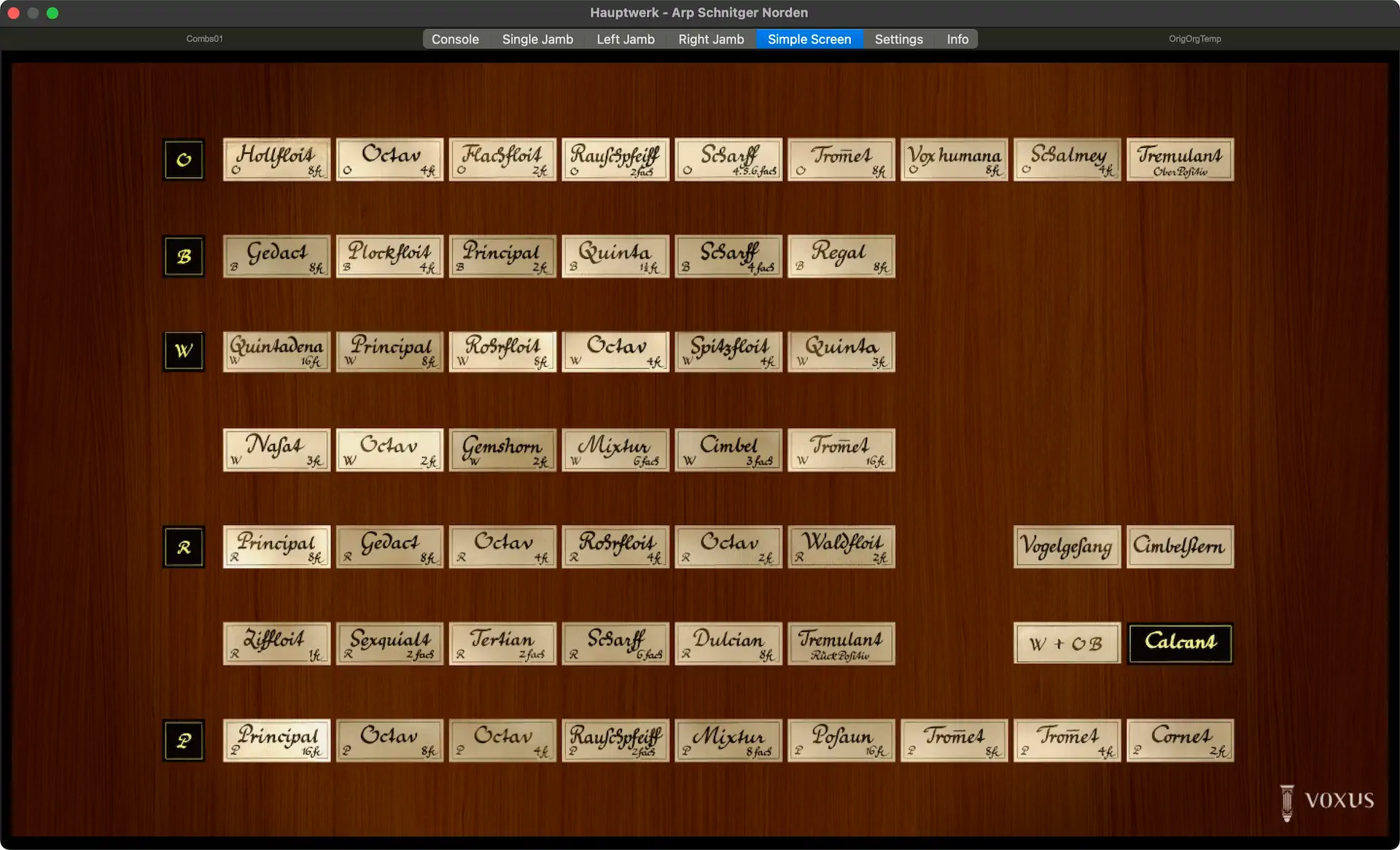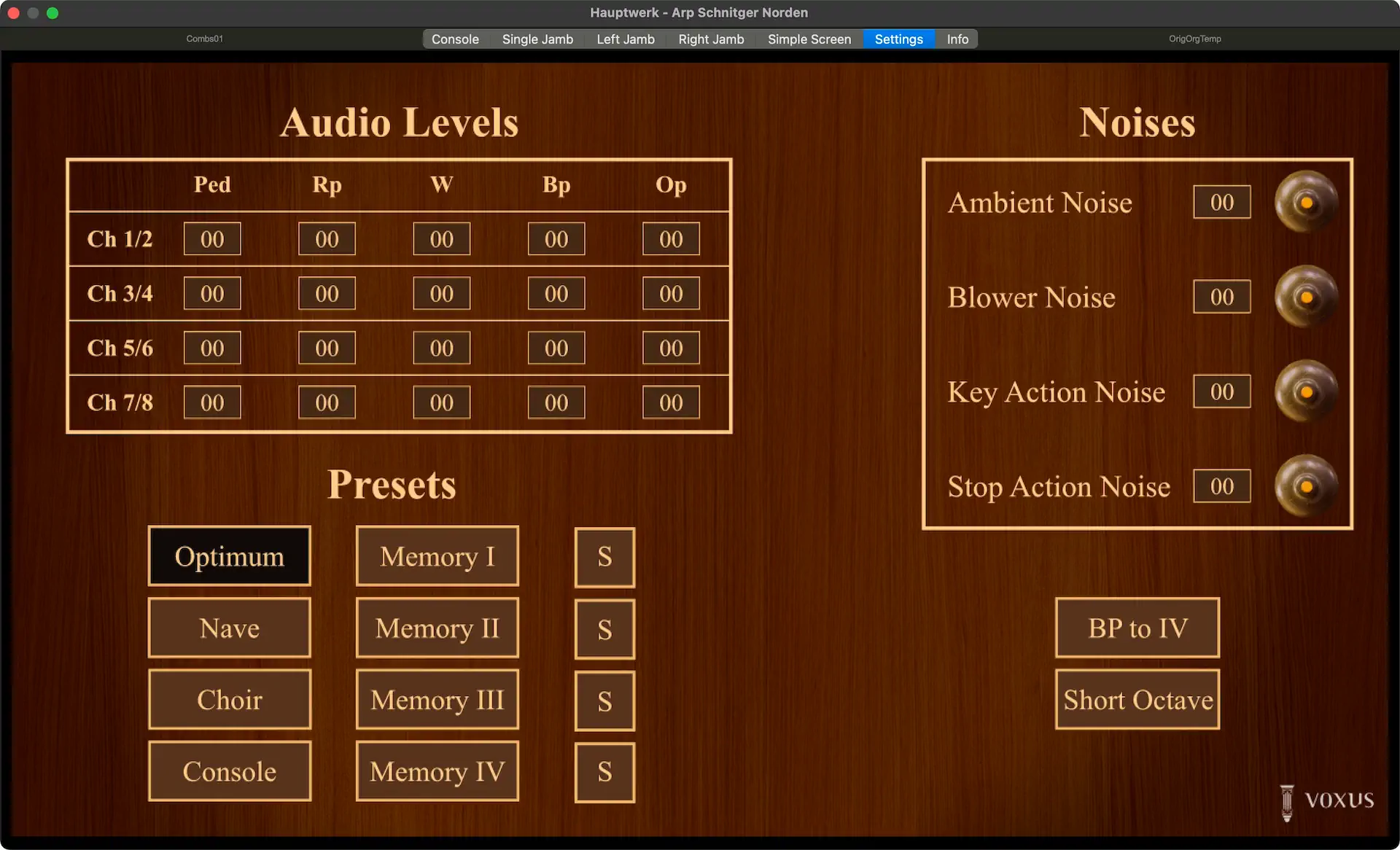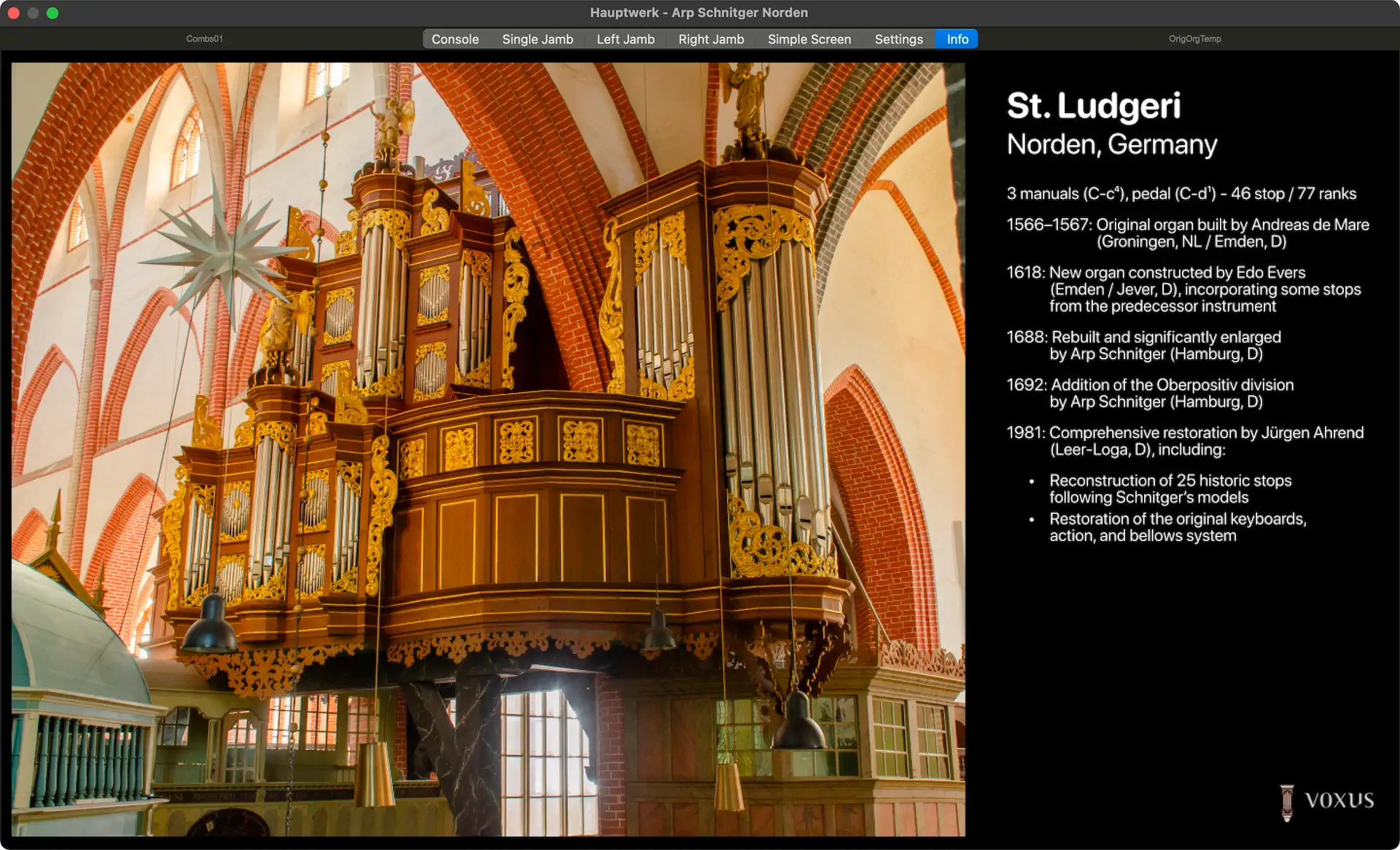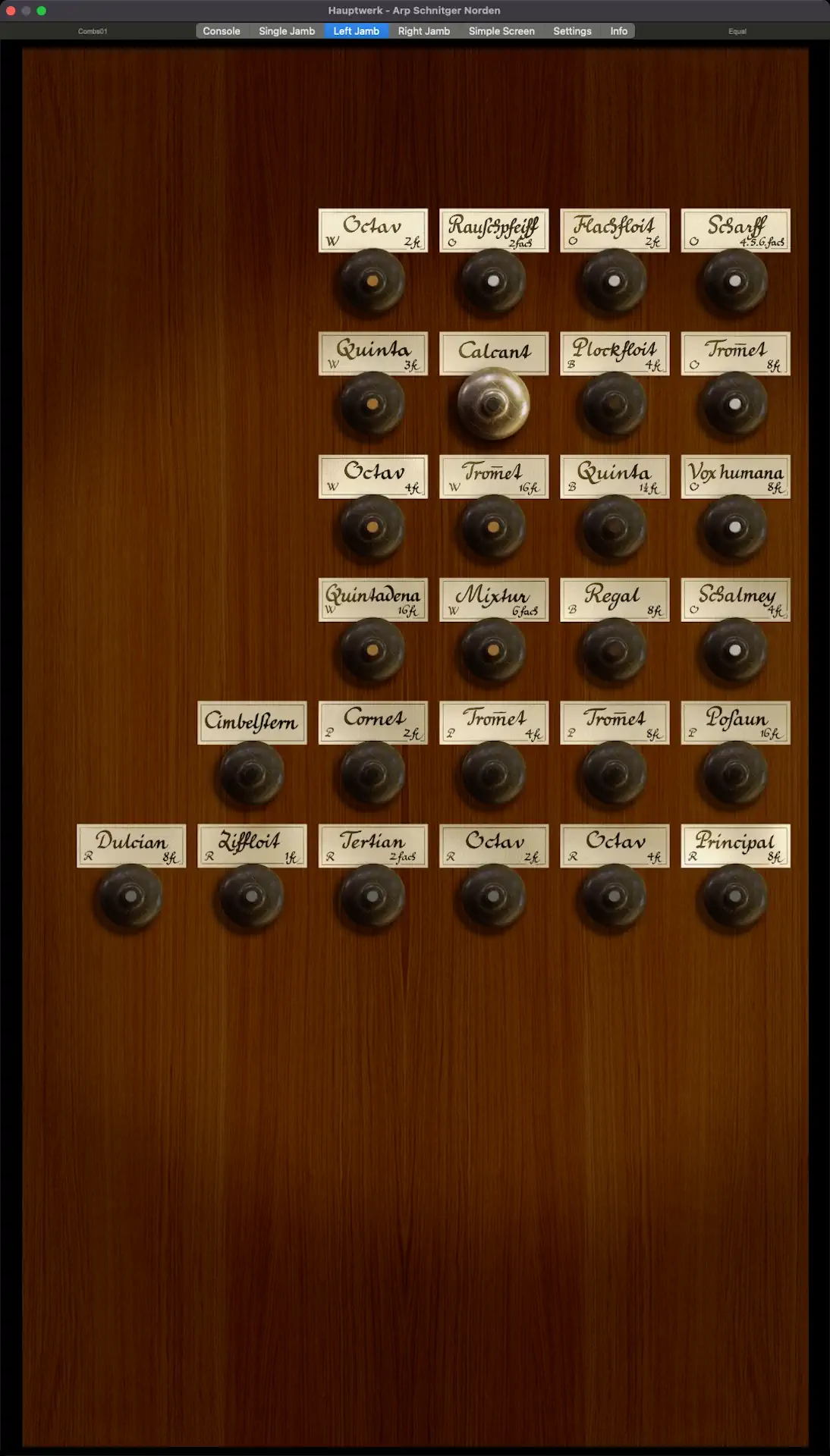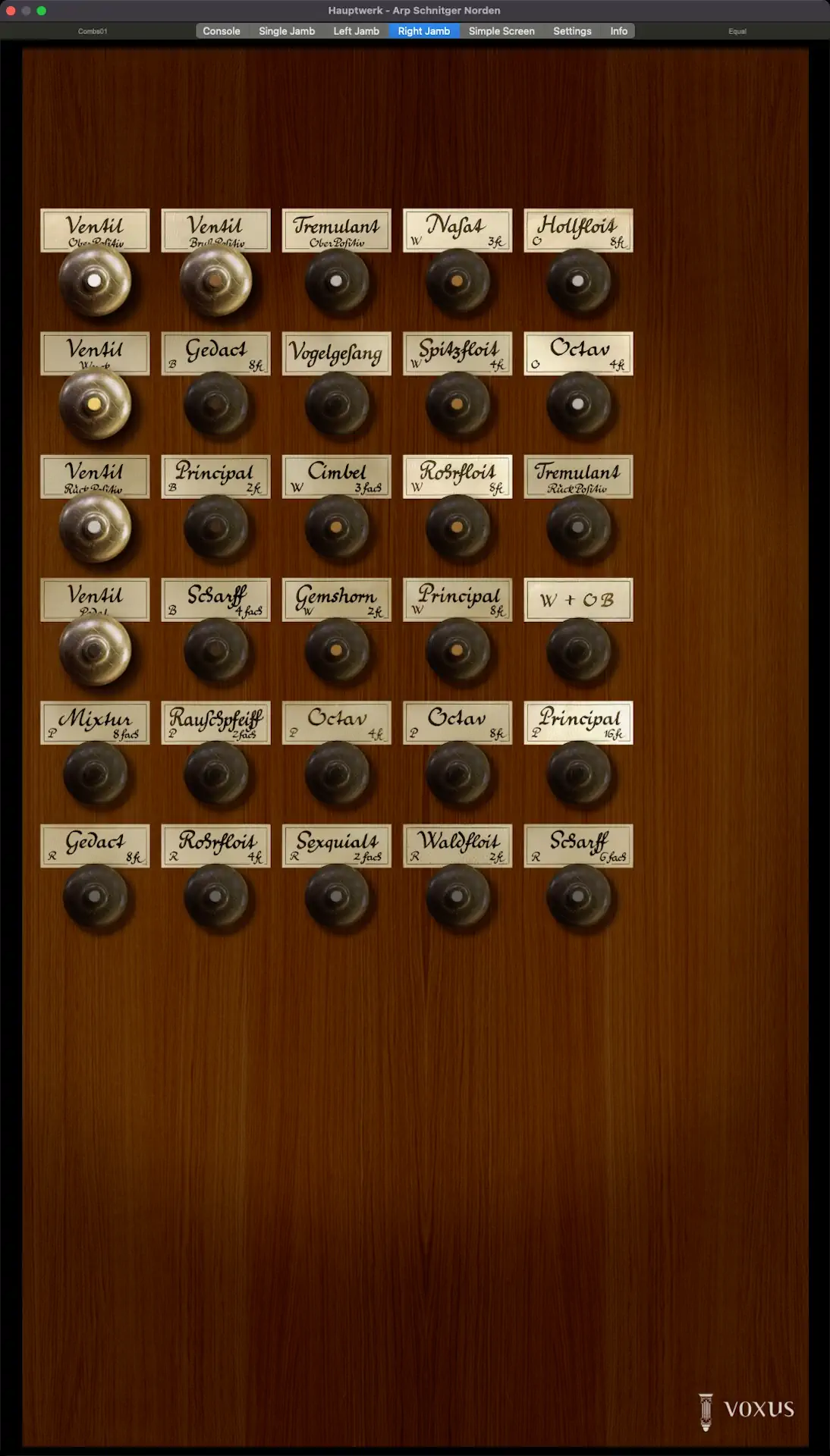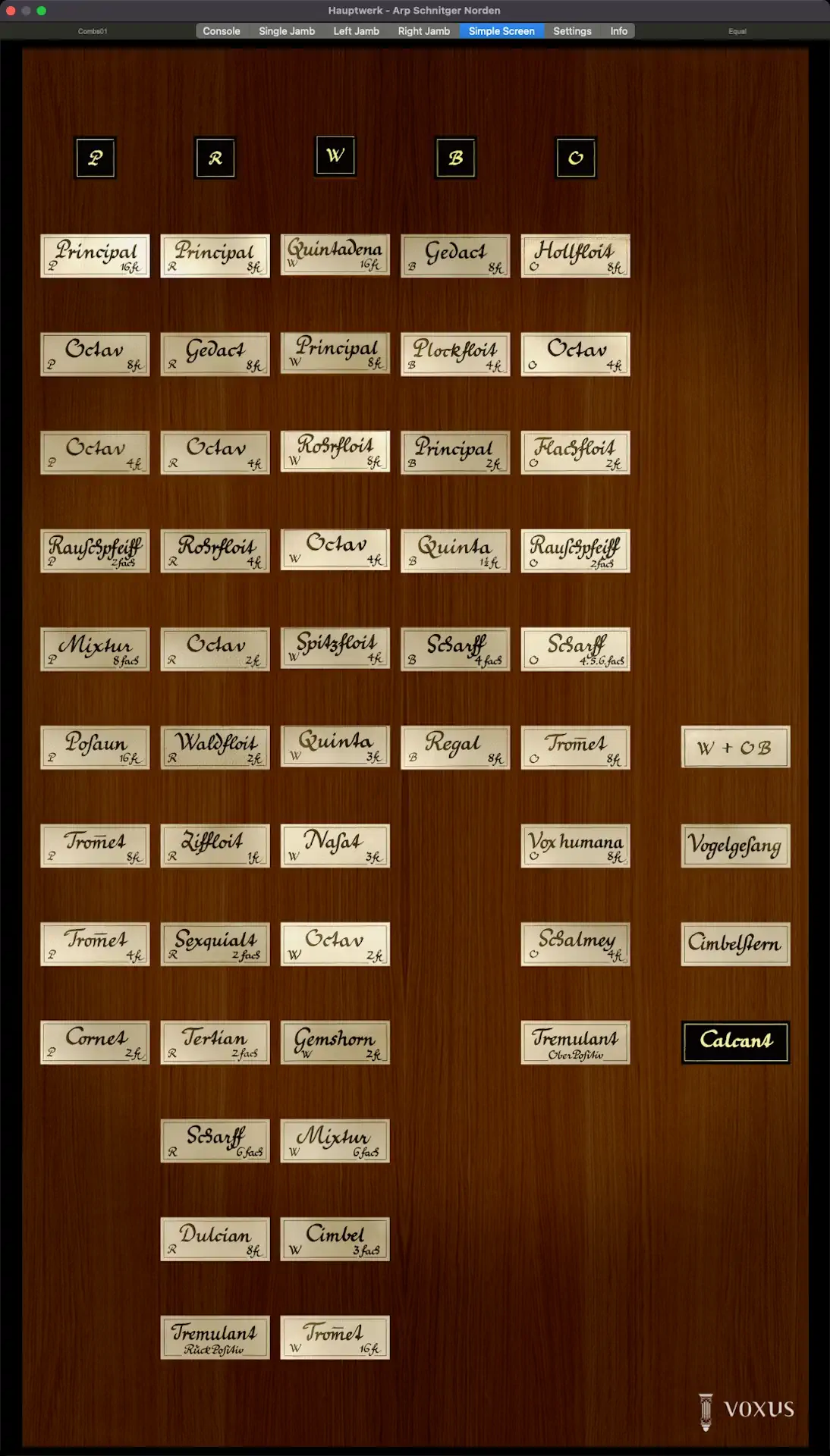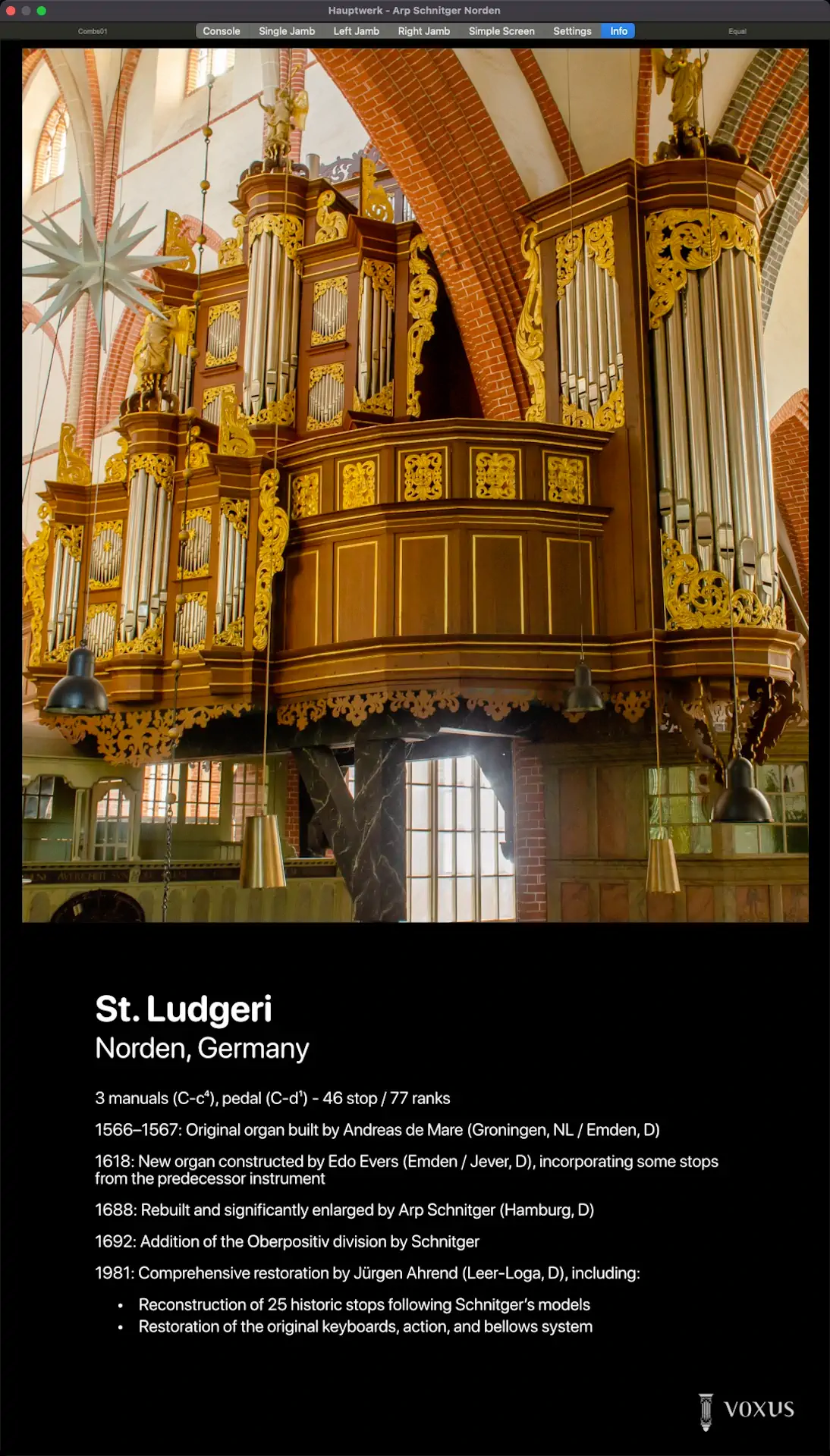This sample set is produced by VOXUS Virtual Organs.
The price for the 8-channel surround set is 369.00 EUR (439.11 EUR incl. German VAT).
For customers outside the European Union the VAT will be deducted.
Note: St. Ludgeri Norden Surround is compatible with Hauptwerk™ version VII or later.
It is not supported on versions V or VI.
St. Ludgeri Norden
The Church of St. Ludgeri in Norden houses one of the most renowned organs by Arp Schnitger, one of the most important North German organ builders of the Baroque era. Built in 1686–88 and expanded in 1691–92, using the eight stops from an earlier instrument, the instrument features 46 stops and a total of 3,110 pipes, distributed across five divisions played from three manuals and the pedal.
Three of these divisions are immediately noticeable to the viewer: the large pedal tower, which projects into the transept; to its left, the Rückpositiv (a division located in the gallery railing); and above that, the Hauptwerk (main division) on the gallery. The Brustpositiv (a smaller division) beneath the Hauptwerk, directly above the console, is hardly visible from the nave, while the Oberpositiv, which was added in 1691/92 above the Hauptwerk in the background (where earlier organs had been placed), is somewhat easier to see.
While the Rückpositiv and Hauptwerk exhibit the typical symmetrical layout of Schnitger’s work in their pipe façades surrounded by Baroque carvings (a polygonal bass tower in the center crowned with an angel playing a trombone, two pointed towers on the sides, and between them two tiers of flat treble fields), the entirely asymmetrical setup at the southeastern crossing pillar — with a slight angle and the spatially separate, one-sided pedal tower — is quite unusual for Schnitger and his time. However, it ingeniously accommodates the unique spatial conditions of the Ludgeri Church: the organ sound reaches all parts of the building — the high choir, the nave with the transept and crossing — albeit with varying effect, thus fulfilling the then-new and still-important role of supporting the singing congregation throughout the church.
The especially noble and colorful sound, with its characteristic historic tuning, has made the second-largest surviving Schnitger organ in Germany a highly sought-after attraction for organ experts and enthusiasts from around the world, particularly since its exemplary restoration from 1981 to 1985 by Jürgen Ahrend (Leer-Loga).
Stop List
I. Rückpositiv
Principal 8′ (A)
Gedact 8′ (P)
Octav 4′ (S)
Rohrfloit 4′ (S)
Octav 2′ (P)
Waldfloit 2′ (S)
Ziffloit 1′ (S)
Sexquialt II (P)
Tertian II (S)
Scharff VI (A)
Dulcian 8′ (A)
+ Tremulant
+ Cimbelstern
II. Hauptwerk
IIIa. Oberpositiv
+ Tremulant
IIIb. Brustpositiv
+ Vogelgesang
P. Pedal
Compass
Manual I compass: CDE – c³ (Hauptwerk extension: C – d³)
Manual II and III compass: CDEFGA – c³ (Hauptwerk extension: C – d³)
Pedal compass: CDE – d¹ (Hauptwerk extension: C – d¹)
Couplers
Sliding coupler III/II
Couplers
P = Previous organ by Andreas de Mare (1566-67) and Edo Evers (1616-18)
S = Arp Schnitger (1686-88 and 1691-92)
A = Jürgen Ahrend (1981-85)
Sample Set
- Eight channels (4 stereo channels) of chromatically sampled stop-by-stop pipes
- Recorded tremulants for all Rückpositiv and Oberpositiv stops
- Adjustable volume levels for each division and perspective
- Adjustable volume levels for ambient, blower, key action and stop action noises
- 4 fixed (Optimum, Nave, Choir, Console) and 4 custom volume presets
- Brustpositiv configurable as 4th manual
- Switch to activate short octave (version 1.0.2)
- Photorealistic console screen (landscape)
- Photorealistic single jamb (landscape)
- Photorealistic dual jambs (landscape and portrait)
- Simple screen (landscape and portrait)
- Settings screen (landscape)
- Info screen (landscape and portrait)
RAM Requirements
8 channels, 24-bit lossless compression, multiple audio loops: 65.7 GB
8 channels, 20-bit lossless compression, multiple audio loops: 59.3 GB
8 channels, 16-bit lossless compression, multiple audio loops: 36.3 GB
Audio Samples
Richard McVeigh
Johann Sebastian Bach: Passacaglia c-Moll, BWV 582
Ralph Looij
Dietrich Buxtehude: Praeludium a-Moll, BuxWV 153
Ralph Looij
Dietrich Buxtehude: Nun komm der Heiden Heiland, BuxWV 211
Ralph Looij
Georg Böhm: Praeludium & Fuge a-Moll
Ralph Looij
Johann Nikolaus Hanff: Ein feste Burg ist unser Gott
